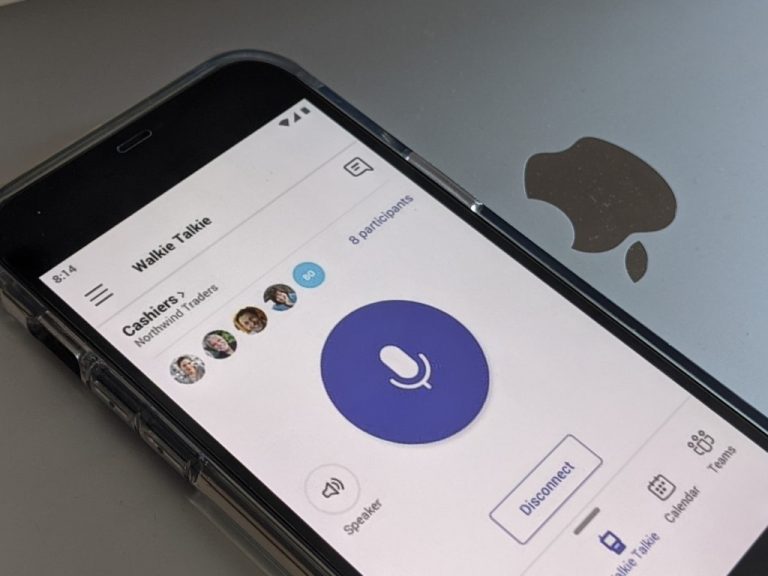Microsoft has announced some important updates for Teams during its Inspire 2021 digital event yesterday, and these capabilities have been designed to help frontline workers. The company revealed that the new push-to-talk Walkie Talkie feature in Teams will be available in preview for select iOS users today.
The Walkie Talkie functionality was spotted on the Microsoft 365 roadmap back in March, and Android users have been enjoying this integration since last year. This release will allow frontline workers to turn their employee or company-owned iOS devices into a walkie-talkie to connect with their Teams over a Wi-Fi or cellular connection from any location.
“This push-to-talk experience enables clear, instant, and secure voice communication over the cloud, turning employee- or company-owned iOS and Android smartphones and tablets into a walkie-talkie. The functionality, built natively into Teams, reduces the number of devices employees must carry, and lowers costs for IT. Unlike analog devices, customers no longer have to worry about frequency static, crosstalk or eavesdropping from outsiders,” the company explained.
This feature will require IT Admins to add Walkie Talkie to their app list in the Microsoft Teams admin center. Once enabled, Microsoft Teams users will need to tap the Walkie Talkie option available in the navigation bar on their mobile devices. Finally, choose a channel, press and hold the Mic button to talk, and then release the button to listen to it.
In addition to this feature, the software giant has also announced that Microsoft Teams is getting new integrations with Zebra-Reflexis and Blue Yonder. These Shifts Connectors will bring automated schedules and rules into the mobile app, making it easier for frontline workers to track and manage their shifts. This update is currently available in private preview, and you can check out the Microsoft Teams blog for more details.



